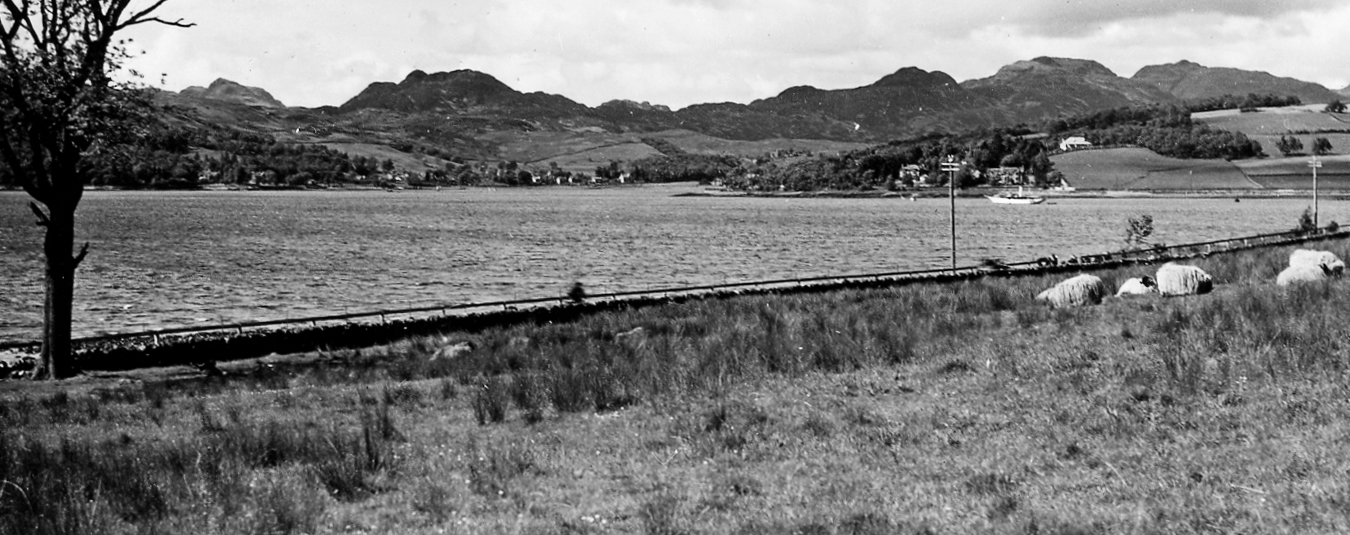FASLANE Bay today is a massive naval base . . . but it was once a prosperous farming haven.
For much of that time the farm, with its rugged landscape, unforgiving climate and unpredictable weather, was worked by five generations of one family.
The MacFarlans achieved much on the farm — and in public and community life as well.
Helensburgh Heritage Trust director and local historian Alistair McIntyre has researched their lives at Faslane, and what follows is the result of his labours.
Clan MacFarlane historians are split over the family forebears, either the MacFarlanes of Kenmore from Loch Lomondside or the MacFarlanes of Tullichintaull from Glen Douglas.
Alistair says that, if the Kenmore chronology is to be believed, a Parlan MacFarlan was the first in the family to be specifically associated with Auchenvennel Mor in Glen Fruin.
The lands of Auchenvennel Mor then belonged to the Colquhouns of Luss, who had been in possession from 1496, when, on the occasion of his marriage, Sir John Colquhoun received a charter from Matthew, Earl of Lennox, the brother of his bride, for a number of properties.
These included the lands of “Achvanyll”. So Parlan would have been a tenant of the Colquhouns.
Auchenvennel Mor was distinct from the neighbouring settlement of Auchenvennel Mouling, where the tenancy was long associated with the MacWalter family. This property was eventually subsumed under the name Ballevoulin.
According to the Kenmore genealogy, Parlan was succeeded by Robert, and he in turn was succeeded by another Robert. It was perhaps this second Robert who erected a unique headstone in Rhu churchyard.
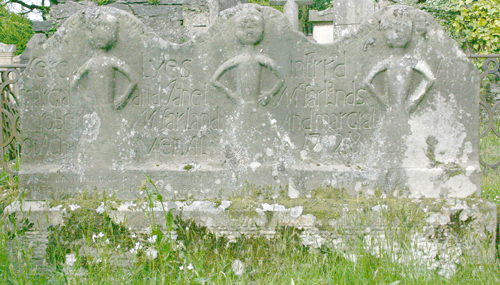 The memorial depicts what has become popularly known as ‘Rhu’s Laughing Maids’.
The memorial depicts what has become popularly known as ‘Rhu’s Laughing Maids’.
There are carvings of three girls, side by side, arms akimbo on tiny waists. They seem to be smiling, perhaps an acknowledgement of their happiness together in their short lives.
The inscription reads: “Ann, Margrat and Janet, the daughters of Robert and Margrat MacFarland of Achavenal 1728”.
The parents were obviously moved to make a touching tribute, but the other significance must lie in their ability to finance what must have been a relatively costly undertaking.
Further evidence that the family were fairly prosperous is that at some stage they became, not just tenants, but owners of Auchenvennel Mor.
In 1763, John MacFarlan of Auchenvennel Mor sold the property to Sir James Colquhoun for £1,000, this being described as “the £3 land of old extent of Auchinvenallmor, with the teinds and fishings, and the right of casting peats on the hill of Stuckiedow”.
The farm was a sizeable one, extending to some 500 acres, although this included a good deal of rough hill land. After this transaction, John continued to live at Auchenvennel, but now as tenant.
Old Parish Records show that a John MacFarlan and Elizabeth McCaslin, spouses in Auchenvennel Mor, had a son, Parlan, in 1771.
Faslane had been populated since mediaeval times, and quite possibly long before.
The early Earls of Lennox, or members of their family, had a stronghold here.
This is thought to have been located close to the line of the West Highland Railway, and the remains are usually described as having been destroyed when that was built in the 1890s.
The nearby ruined St Michael’s Chapel has been described by architectural historians McGibbon and Ross as being as old as 13th century, and could well have been built in association with the castle.
In more settled times, a mansion house for the laird existed, and this eventually came to be used as a farmhouse by the MacFarlans.
The farm building comprised an old structure to the rear, an adjoining portion, dated 1745, and a frontage, dating from 1863. Some of the stones were said to have come from the old chapel.
The officers of the Ordnance Survey described the house in 1860 as “a superior dwelling house”, which implies a substantial building of quality.
There were a number of legends and stories. One claimed that when a cock crowed below the gnarled oak tree that stood in the grounds, it presaged the death of a MacAulay.
Poignantly, the last MacAulay laird came here for a time after Ardencaple Castle became uninhabitable.
Forced to move again by increasingly straightened circumstances, he ended up in a cottage at High Laggarie, Rhu, where, in a state of abject poverty, he died in 1767 “childless, landless, and friendless”.
The lands of Faslane had a variety of owners over the years, but when the MacFarlan family began to farm there in 1785, it was the Colquhouns of Luss who were the lairds.
Faslane would most likely have been farmed for a very long time, but little is known about early tenants.
One farmer who did come to attention was a John MacAulay, who in 1721 featured in “The Case of the Cursed Cattle”.
A woman, Mary MacWalter, had been accused of putting a deep curse on cattle belonging to MacAulay. The matter was taken up by Row —now Rhu — Kirk Session.
Proceedings were repeatedly delayed because of the failure of witnesses to appear. Investigations revealed that the farmer had taken over the land used by Mary, and that he had also “turned her and her bairns out of their house”.
The case was referred to Dumbarton Presbytery, who decided that the accused should be publicly rebuked.
The upshot was that the punishment was duly put into effect, with Mary acknowledging her transgressions.
Rosneath Peninsula historian W.C.Maughan, author of “Annals of Garelochside” (1897), refers to the McFarlan family at Faslane, and had spoken with the then farmer, John MacFarlan (1809-1900).
Although John was then advanced in years, his recall would appear have been very clear, and he was able to give Maughan a great deal of detail.
His understanding was that it was his grandfather, also John, who had removed from Glen Fruin to Faslane in 1785.
Obituary notices back up his version of events, and also reveal that the grandfather had owned property in Glen Fruin.
His son was Parlan MacFarlan who was born in 1771 and married in 1807, when some useful information was recorded. He was by then tacksman at Faslane, a term often used to describe a farmer with a sizeable holding.
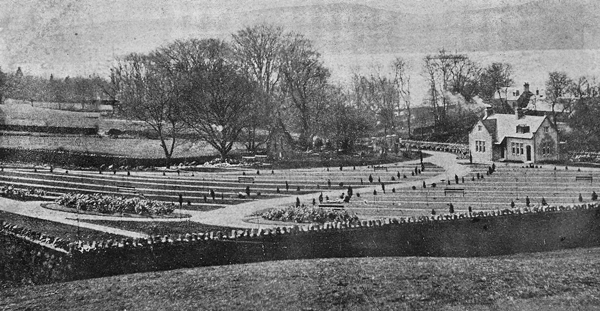 Parlan was a key figure in the history of the MacFarlans who farmed Faslane.
Parlan was a key figure in the history of the MacFarlans who farmed Faslane.
Also living there was his father, John, also a farmer. This would suggest that John had by then passed the reins to his son — possibly he was now semi-retired.
Parlan’s bride was Helen Darroch, of the New Parish of Greenock. Her father, Duncan Darroch, is referred to as “Esquire”, which suggests he was a man of some standing.
Not a great deal is known about Parlan and Helen, but a Colquhoun Estate rental list of 1838 provides a telling insight.
Not only had Parlan the tenancy of Faslane and Chapeltoun — he was likewise tacksman of Auchengaich, Auchenvennel Mor, Ballevoulin, Blairvrian and Stuckadow, all in Glen Fruin.
Such an extensive portfolio must imply someone who was not only a highly capable farmer, but also a businessman and manager of no mean talent.
Parlan made the successful transition from the old-style farming to the new, intensive, sheep-based economy.
Amidst all the success, however, there was also misfortune.
The couple already had a sizeable family when, in 1834, Helen died in childbirth, at the age of 44. The baby, Allan James, survived, but died before his second birthday.
The Census of 1841 recorded the head of household Parlan (65), along with son John (25), also a farmer, and daughters Elizabeth (25), Robina (20), and Ann (15).
There was also a George MacFarlan (75), of independent means, probably a relative.
In addition there were three male agricultural workers, three female servants, and a mole catcher, presumably an itinerant worker. In that particular census, ages were rounded off to the nearest five years.
Parlan died in 1846, when son John took over the reins.
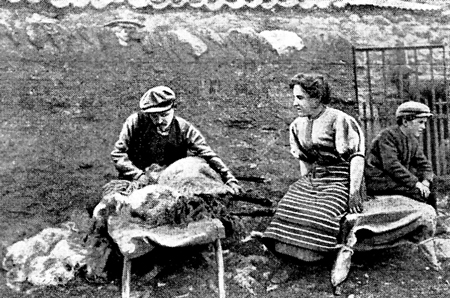 A good deal is known about John. A farmer through and through, he acquired a reputation as an expert breeder of sheep and cattle.
A good deal is known about John. A farmer through and through, he acquired a reputation as an expert breeder of sheep and cattle.
The quality of the animals that he produced was demonstrated in 1887, when some of his Glen Fruin cattle were purchased by Sir Michael Shaw-Stewart for his Ardgowan estate, when they were referred to as splendid-looking animals.
Regarded as a man of sound judgement, prudence and integrity, John was often employed as a valuer of livestock and land. Frequently serving as a judge at the Highland Society Show, he was appointed a judge at the First Paris Exhibition of 1851.
John’s experience was called into play in 1866, when an outbreak of rinderpest occurred in Scotland.
A devastating disease affecting cattle, it made its appearance in Britain the previous year, when it was found among the London dairy herds.
Despite strong preventative measures being taken, the disease spread rapidly, and was not long in reaching Scotland. Dunbartonshire was badly affected, and the appointment of John to Dunbartonshire Cattle Plague Board was a foregone conclusion.
In England, out of an estimated total of four million cattle, around 250,000 died, or were killed, including many healthy animals.
In Scotland, out of a total of an estimated one million animals, almost 47,000 were attacked, of which 11,000 recovered, and over 13,000 healthy animals were slaughtered.
By the end of 1866, the outbreak was almost over. But Rinderpest was finally declared extinct worldwide as recently as 2011, after a prolonged programme of eradication.
John saw many changes in farming during his long life. There were no butchers, even in Helensburgh, and farmers often killed and butchered their own animals.
Away from the world of farming, John took a keen interest in public life.
He was a member of the old Row Parochial Board, and also served on the School Board of the Parish of Row and as a Justice of the Peace.
John married Barbara Turner, who also came from a distinguished and long-established local farming family.
Her grandfather, James Turner, hailed from Edentaggart, a large farm at the head of Glen Luss, and her grandmother, Margaret Smith, came from the neighbouring farm of Glen Mollochan.
The Turners had been in the area for centuries, and were often styled in older documents as MacInturners.
Not only were they farmers — some became merchants, both at home and overseas. One even became Town Clerk of Glasgow.
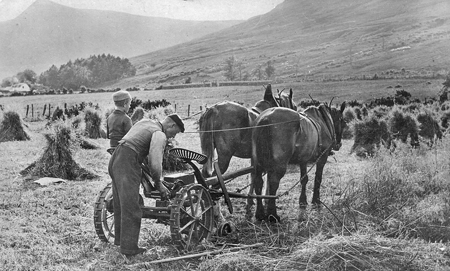 Barbara’s father, Coll James Turner, was also a farmer. He settled down in the Rosneath Peninsula, where, at both North and South Ailey, he and his spouse, Margaret MacCallum, raised a sizeable family, including Barbara, who was born in 1827.
Barbara’s father, Coll James Turner, was also a farmer. He settled down in the Rosneath Peninsula, where, at both North and South Ailey, he and his spouse, Margaret MacCallum, raised a sizeable family, including Barbara, who was born in 1827.
With her marriage to John, Barbara’s presence at Faslane may have played a part in the eventual purchase by her father of the gracious villa of Woodburn on the outskirts of Garelochhead — not the present house.
It was built around 1845 by Elizabeth Strang, wife of the Town Chamberlain of Glasgow.
Coll James and his family took up residence at the house around 1870, at which time he was described as a Greenock-based wool merchant.
Barbara and John had a number of children including sons Parlan (b.1861), Coll James Turner (b.1862) and Robert (b. 1865).
With the death of his father in 1900, Parlan took up the farming reins at Faslane. Like his father, he soon became known as one of the most prominent sheep-breeders and agriculturalists in the West of Scotland.
Again like his father, he married a Turner, in this case, Janet, the eldest daughter of Archibald and Mrs Turner of Kilchomaig, a farm at West Loch Tarbert, Kintyre.
Parlan and Barbara had by 1906 settled down to married life at Faslane, and soon began raising a family.
Like his father, Parlan became heavily involved with public life, serving for many years on the County Council of Dunbarton, and on Helensburgh District Council, of which he was chairman for a time.
He also became a member of Row Parish Council. In addition to his other commitments, Parlan gave many years of service as a J.P.
Notwithstanding the varied demands on Parlan’s time, photographs of the period show the lands of Faslane and those of the adjoining farm of Greenfield to be in a well-managed and prosperous-looking condition.
With its pastoral backdrop and sheltered shores, Faslane Bay presented a scene of peace and tranquillity, and was famed for its beauty and sea-trout fishing.
All this was however to change in due course. Faslane Bay was under scrutiny by the powers that be, with military uses in mind as there were increasing worries about the possibility of the Clyde being raided or invaded by hostile forces.
From the time of the Napoleonic Wars, various plans were made for the defence of the Clyde, and some measures put in place.
In 1888, the War Office was actively considering the use of the bay as the base for a rapid deployment force of torpedo boats.
However, partly because of opposition from landowners, the scheme was dropped. Faslane, though, was now on the military consciousness.
During the First World War, there was some military activity on and around the Gareloch.
But it was really the Second World War and the construction of the American Military Port No.1 at Rosneath in the early 1940s that led to massive change — and meant the end for Faslane House and Farm.
Owner Parlan MacFarlan had no option but to give it up, and any thoughts of the next generation succeeding him at Faslane had to be abandoned.
Parlan and Janet retired to live at Brooklee in Granville Street, Helensburgh, where Parlan died in 1948 at the age of 87.
Janet moved to Cupar in Fife, where her eldest daughter lived, and it was there, in 1959, that she died.
One son, Donald, was ultimately to farm locally, but other sons moved away from the area, to Edinburgh, London and Devon.
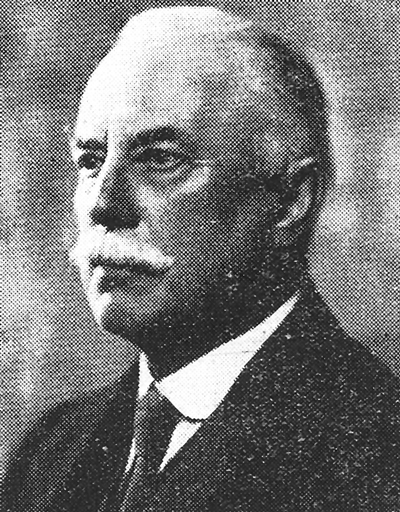 Coll James, the second son of Parlan and Janet MacFarlan, took up the tenancy of Stronafyne Farm, in Glen Loin, Arrochar, around 1890.
Coll James, the second son of Parlan and Janet MacFarlan, took up the tenancy of Stronafyne Farm, in Glen Loin, Arrochar, around 1890.
In a sense, he was coming home to the MacFarlane heartland, and following in the footsteps of generations of that name who had once worked the lands of Stronafyne.
At that time, it was a very large farm of almost 7,000 acres, extending from Arrochar and Tarbet in the south to Ben Vorlich in the north.
While there was some ground that could be cultivated, much of the land was extremely rugged, and quite unlike what he would have been familiar with at Faslane.
Coll James was known to all as ‘Stronafyne’ and later ‘Old Stronafyne’, in his nearly 60 years tenancy.
He and brother Parlan were associated in their younger days with cattle droving, even though the trade was by then in its twilight years.
In 1956, one of the last of the drovers, Dugald MacDougall, born in 1866, was interviewed about his life.
An Argyllshire man from near Lochgilphead, he remembered frequently taking droves over the Rest and Be Thankful, and stopping overnight at Stronafyne.
The following day, he would continue with the cattle to the MacFarlan farm at Faslane, where they would again rest overnight, before proceeding to the final destination at Stirling or elsewhere.
Dugald also described how Coll James was in the habit of buying young cattle from the islands at Oban, to be sold 18 months later at Falkirk.
It was also mentioned that an Archie Campbell, later resident at Arrochar, had, as a young lad, assisted his father in taking a drove of 30 young cattle from Oban, on behalf of Coll James, to his farm at Stronafyne.
This was in 1914, and must have been one of the very last droves in Scotland.
Coll James came to be highly respected, not just as a farmer, but in his service to the community. His list of accomplishments was remarkable.
He was a member of the old Arrochar School Board; he served on Arrochar Parish Council from 1895-1930; and he was a member of its successor, Helensburgh District Council, from 1930 until shortly before his death.
He was Parish representative on Dunbartonshire County Council until resigning in favour of William Russell.
He carried out the roles of Secretary and Treasurer to Arrochar Parish Hall from the time of its inception; he became an elder of Arrochar Parish Church in 1896, and served as Session Clerk from 1901-1947; he also served for many years as a J.P.
In 1935 a presentation was made to him before a packed gathering by Sir Iain Colquhoun, in his capacity as Lord Lieutenant of Dunbartonshire — and also the owner of Stronafyne.
The health of Coll James began to deteriorate from 1947, and it became necessary to employ the services of a nurse to look after him. His nephew, Donald MacFarlan, the son of Parlan MacFarlan at Faslane, took up the running of the farm.
As Arrochar local historian Mary Haggarty points out, there was a silver lining at this otherwise sombre time, as Donald courted, then married his uncle’s nurse!
Several months after the wedding, Coll James passed away, in October 1949. At the time of his death, he was worth over £61,000, again underlining the prosperity of the family.
Donald gained the tenancy of Stronafyne, and farmed there for a number of years, before it passed to another well-known Arrochar farming family, the Patersons of Succoth.
In recent years, a son of Donald’s, Parlan, was able to give Mary Haggarty and her colleagues at Arrochar Tarbet and Ardlui Heritage Group many evocative pictures of life at Stronafyne, and they can be seen on the group’s excellent website.
Born in 1865, the youngest son of Parlan and Janet MacFarlan, Robert MacFarlan also had a distinguished career, both in farming and in public service.
He took up the tenancy of Tullich Farm, formerly known as Tullichintaull, in Glen Douglas about 1886.
In the 16th century, it was owned by the Colquhouns of Luss, but around the time of the Battle of Glen Fruin in 1603, it was feued to the Macfarlanes.
This was possibly as part of a deal which helped bring to an end the deadly feud existing between the Chiefs of Colquhoun and MacFarlane.
The property was for long associated with the MacFarlanes, and Robert also had a house at Arrochar, Dail Dairach.
A noted farmer, Robert — like his father and brothers — was also closely identified with public service.
He was a member of Arrochar Parish Council for 20 years, and was a member of Dunbarton County Council for nine years. He too became a J.P.
It was in the field of education that Robert is perhaps best remembered, being a member of Luss School Board for 16 years from 1895.
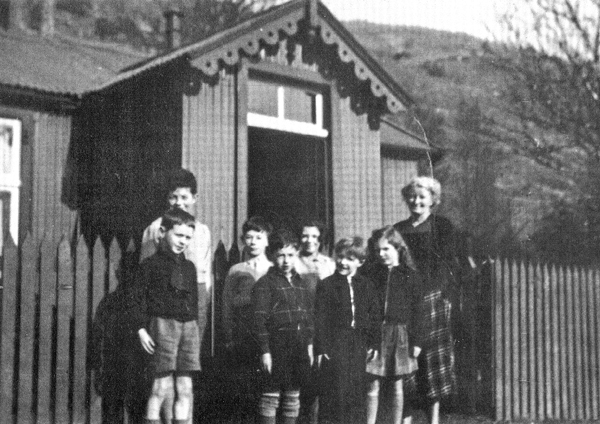 He is particularly associated with the school in Glen Douglas, which surprisingly proved something of a challenge.
He is particularly associated with the school in Glen Douglas, which surprisingly proved something of a challenge.
The passage of the Education (Scotland) Act of 1872, made school education compulsory for the first time. The problem was that in Glen Douglas, distances were too great for children to walk to the nearest schools at Arrochar, Luss and Garelochhead.
So a school was set up in the Glen, but this was a fluid arrangement, whereby schooling was conducted wherever space could be found at the various farms.
There was no accommodation for the teacher, who had to seek lodgings where best she could. Staff turnover was rapid, and clearly the situation was unsatisfactory.
An additional difficulty stemmed from the location of Glen Douglas. It was at the meeting place of three parishes, Arrochar, Luss and Row, each of which had its own School Board.
Scrutiny of the minutes of these boards reveals that there was a good deal of friction between them over the running of the school and the costs.
At the heart of the problem was the fact that children from all three parishes were attending the school, and the question was: how much should each board contribute towards the associated costs?
Agreement was reached in 1891 to provide a purpose-built corrugated iron school. The school was soon in place, but was purely a classroom and store, without teacher accommodation.
This was the situation when Robert joined Luss School Board in 1895. Five years later teacher accommodation became available in an extension.
The job of teacher was now a much more attractive proposition. While previous teachers had been young women, Alexander Robertson, a married man, was appointed to the post.
Robert and his wife, Kathleen Sim, enrolled their nine year-old daughter Sheena at the school in 1906, having previously attended Arrochar School.
Robert and Kathleen proved to be good friends of the school, donating prizes, and providing treats, as did Lady Colquhoun. Many years later, Sheena returned to the school — but as a drill instructor.
The school hosted visiting health professionals and dentists, housed a branch of the county library, served as a community centre, and hosted the occasional service conducted by the Luss Parish Church minister.
The eventual fate of the school was bound up with that of Tullich Farm.
With the coming of the hush-hush Admiralty scheme to Glen Douglas in the early 1960s, the school closed its doors in 1965, and was demolished five years later.
Tullich Farm was likewise dismantled, and a replacement built further down the Glen. Robert gave up the tenancy of Tullich around 1926 and retired to Arrochar.
He, along with Kathleen and Sheena, are interred in the burial ground at Arrochar Church, not far from the resting place of Coll James — and close to the place from which their ancestors came.

